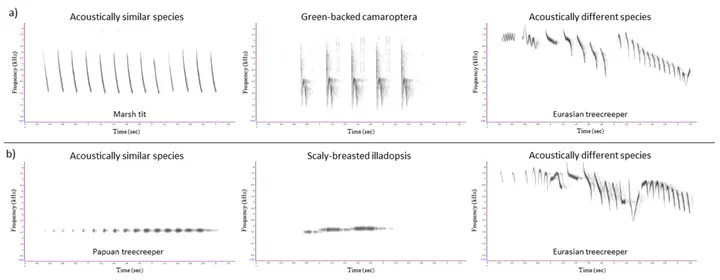Interspecific avoidance of song overlap in tropical songbirds: species-specific responses to acoustically similar and different intruders
 Budka et al. 2023
Budka et al. 2023Abstract
To ensure effective acoustic communication, signals should reach receivers in the least distorted form possible. Animals use various short- and long-term strategies to avoid signal degradation and masking. However, we still have an insufficient understanding of how animals’ vocal behaviour is impacted by the vocalisations of other animals in their acoustic communities. We experimentally examined how two tropical, sedentary, territorial songbirds in Western Uganda—the scaly-breasted illadopsis (Illadopsis albipectus) and the green-backed camaroptera (Camaroptera brachyura)—modify their singing behaviour after the simulated appearance of new, unfamiliar acoustic competitors, whose songs vary in similarity to those of the species studied. We found that scaly-breasted illadopsis sang significantly less during the playback of songs of acoustically similar species than of acoustically different species or silence and avoided song overlapping with acoustically similar species but not with acoustically different species. Green-backed camaroptera sang significantly more during the playback of both acoustically similar and different simulated intruders than during the control containing silence, and patterns of overlap with the songs of both the acoustically similar and different species were random. Our results show that even a single-point noise source present within a territory can modify a bird’s singing behaviour. The new sound may affect species differently, depending in part on the level of acoustic similarity with the species’ song. To mitigate the effect of song masking, different species may use different strategies, such as temporal avoidance or signal redundancy. Studies examining the adaptive abilities of species in natural and modified habitats are needed to predict the consequences of changes in acoustic community structure.